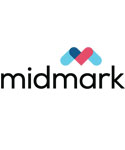Save time and decrease stress! Complete the following form to create customized, printable discharge instructions for your anesthesia patients.
Hospital
Patient
Anesthesia
IV Catheter
Food and Water
Activity
Medication
Home Care
Seek Immediate Veterinary Care if...
Recheck
Final Comments

To [PET NAME]’s caregivers,
You’re doing a great job caring for [PET NAME]. Your veterinary team at [HOSPITAL NAME] will continue to support you as you manage [HIS/HER] health.
Dr. [VETERINARIAN NAME] wanted to share this important information with you concerning [PET NAME]’s visit today.
Anesthesia
[PET NAME] did well under anesthesia.
- Since anesthesia can decrease tear production, an ointment was placed in [HIS/HER] eyes to protect them while [HE/SHE] was asleep. This oily residue will dissipate over the next few days.
- Because of the anesthesia, [HE/SHE] may be sleepy and wobbly for the next 1-2 hours. However, some pets have the opposite reaction and seem more agitated or whiny.
An IV catheter was placed to administer IV fluids, anesthesia, and other medications.
- The fur was shaved. Please call us if you notice [HE/SHE] is licking the area excessively or if the area becomes red or irritated.
- Remove the bandage where the catheter was in 1 hour.
Food and Water
Feeding Instructions:
- Feed [PET NAME] [HIS/HER] usual food in 1-2 hours.
- To avoid nausea, do not offer food immediately upon arriving home. Feed about half the usual amount after arriving home if [HE/SHE] seems hungry.
- Some pets have a decreased appetite for 1-2 days following surgery.
Water Restrictions:
- To avoid nausea, offer water in small amounts, every 1-2 hours until [PET NAME] is no longer thirsty. Then you can leave the bowl full as usual.
Activity
- [PET NAME] can return to [HIS/HER] regular activity starting .
Medication
No medications are needed at this time.
Home Care
- [PET NAME] can return to [HIS/HER] normal routine.
Seek immediate veterinary care if [PET NAME]...
- The incision has signs of redness, swelling, or discharge, or if any sutures are missing.
- Seems agitated or uncomfortable for more than 2 hours.
- Has difficulty breathing.
- Begins squinting [HIS/HER] eyes for more than 1 hour at a time.
- Develops any wounds on [HIS/HER] body.
- Refuses to eat or drink for more than 12 hours.
- Does not defecate for more than 48 hours.
- Has diarrhea for more than 12 hours.
- Vomits more than three times in 12 hours.
- Begins bumping into objects.
- Has difficulty walking or jumping.
- The bandage has a foul smell.
If we are not available and you need help, please contact [ER HOSPITAL] at [ER HOSPITAL NUMBER].
Thank you
We appreciate your dedication to [PET NAME] and we’re honored to be with you on this journey.
[PET NAME] is a lovely patient. [PET NAME] has many fans here at the hospital! Thank you for trusting us with [HIS/HER] care.
Please call our hospital at [HOSPITAL PHONE NUMBER] with any questions or concerns.
To save these instructions as a PDF, click the button above and select either “Save as PDF” or “Print to PDF”. This option is available in certain browsers only.
Print the instructions:
Print the instructions and save them as PDF by clicking the button below.





